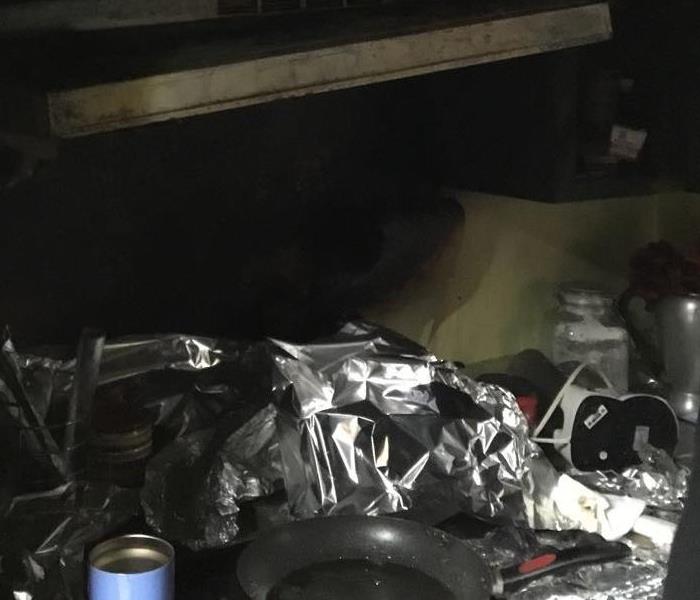Think Fast About Class!
8/10/2022 (Permalink)
 Older appliances often cause electrical fires, and cooking is responsible for many as well. Knowing the type of fire helps in stopping them.
Older appliances often cause electrical fires, and cooking is responsible for many as well. Knowing the type of fire helps in stopping them.
Most people don't think about the differences in fires, but knowing the type of fire helps to be able to put it out faster. There are actually five classifications of fires, and they are designated according to the agent that fuels them.
Class A fires are the most common, and can be extinguished using water or foam. They involve combustible materials like paper or wood. Unlike Class A, Class B fires occur in flammable liquids, and should never have water thrown on them. Foam, powders, and carbon monoxide extinguishers work on Class B fires, which include gas, alcohol, and oils, but not cooking oils.
Water or foam actually make the next classes of fire, Class C and Class D, more dangerous. Class C fires are electrical, and require dry powder or carbon dioxide extinguishers. Class D fires are rare, and involve metals, such as you would find in a laboratory or factory, and also require dry powder to stop them.
Lastly, there is Class K, which often gets grouped into Class B, and it involves cooking oils. These should never be doused with liquids.
Call 601-829-2162 if any type of fire has affected your home or business




 24/7 Emergency Service
24/7 Emergency Service